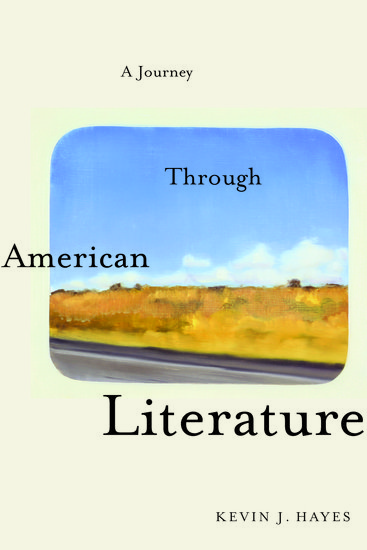By Kevin J. Hayes
Does anyone remember the card game Authors? I do. When we were children, my brother and sister and I had great fun playing the game. Authors was quite basic: its rules were the same as the rules for Go Fish. In Go Fish, players ask, “Do you have any aces?” or “Do you have any queens?” In Authors, alternatively, players ask, “Do you have any Shakespeares?” or “Do you have any Tennysons?”
This card game has been around since the mid nineteenth century, but the authors it has featured have changed occasionally over the years. Each deck contains fifty-two cards: thirteen authors with four cards per author. Each card features a different literary work. For example, James Fenimore Cooper has different cards devoted to each of the following works: The Deerslayer, The Last of the Mohicans, The Pathfinder, and The Spy. Our childhood version had cards for both British and American authors. Besides Cooper, the American authors included Louisa May Alcott, Nathaniel Hawthorne, Washington Irving, Henry Wadsworth Longfellow, and Mark Twain. We started playing this card game before we had ever read any of these authors, but the game helped to fix their names and the titles of their works in our minds. How many times did I ask my brother and sister if they had any Hawthornes before I turned ten?
While writing my recent book, A Journey through American Literature, I often thought of our childhood game. Not only did the game fix the names of authors and titles of works in my mind, it also fixed their personal images: each card featured a portrait of the author. In my mind’s eye I can still see them. James Fenimore Cooper is a balding Brutus. Louisa May Alcott’s portrait may be unfair: she has the sourpuss of a mean-spirited country school marm. Hawthorne wears his yellow-hair long and unkempt. Did Hawthorne really have yellow hair? For me, he always has and always will. The muscles in Washington Irving’s lower jaw work hard to help him keep from cracking a smile or letting his chin double up. And, best of all, Mark Twain has a bushy white moustache, bushy white eyebrows, and shock of white hair: America’s foxy grandpa, John Seelye calls him. Edgar Allan Poe was no where to be found in our childhood deck of Authors. Why not? Perhaps because Poe is the bad boy of American literature.
When Mom bought her children those cards so many years ago, did she foresee that one of us would become an English teacher dedicated to helping others learn about Hawthorne and Irving and Twain? Knowing my mom, I suspect she might have. I happened to mention Authors to my students last semester, but, sadly, none of their moms had bought them the game. In fact, they had never even heard of it. Does anyone else have memories of playing Authors as a child? If so, let me know. I would be curious to read your replies and learn about your experiences.
Kevin J. Hayes, Professor of English at the University of Central Oklahoma, is the author of several books, including A Journey through American Literature and The Road to Monticello: The Life and Mind of Thomas Jefferson. In addition, he is the editor of The Oxford Handbook to Early American Literature.
Subscribe to the OUPblog via email or RSS.
Subscribe to only literature articles on the OUPblog via email or RSS.
View more about this book on the ![]()
![]()


I would love a new version. I loved the game as a child and wound as a writer because of it. Lovecraft looking eldritch, Gertrude Stein looking like Gertrude Stein looking like Gerturde Stein, a question mark for Pynchon, Richard Farina looking down, Bill Burroughs shooting his wife, Norman Mailer with a thouhgt ballon, “Dera Nobel Comoitee what the hell do you people want?” Ursula K. LeGuin looking northwestern, and Flannery O’Connor looking like she gets the Joke.
Yes, we played all of the time. When I was about 7 or 8 my mother gave us the deck of cards along with a speech about literary greatness and about how she had played Authors when she was young. She said that the portraits had been cheapened and were not the “classic portraits” of the authors.
At that point, the imprimatur of a parent had some meaning so we played it all the time, calling Alcott with glee and misogyny, “Weezie May”.
I’ve just looked up some old 19th century and early 20th century editions of the cards on the Internet, and my mother was right. The older versions are richer and deeper in their portraiture. I don’t know when and how Hawthorne became blonde.
Thank you for publishing this piece. Nostalgia always grabs me.
I will be waiting for the new version. I loved playing the game. Thank you for writing.
RZ
I remember that game it was great. I especially remember the pictures of tje authors on the cards.
I was raised in the mountains in Colorado in the 50’s and 60’s with my older brother. We couldn’t get TV reception so we played a lot of games with our parents and Author’s was our favorite. I haven’t played since a teenager (I am now 71 yo) but have thought of it often and all the hours of fun and family time it gave us. As already mentioned by others, I learned a lot about the different authors and their appearances have stayed in my mind all these years!